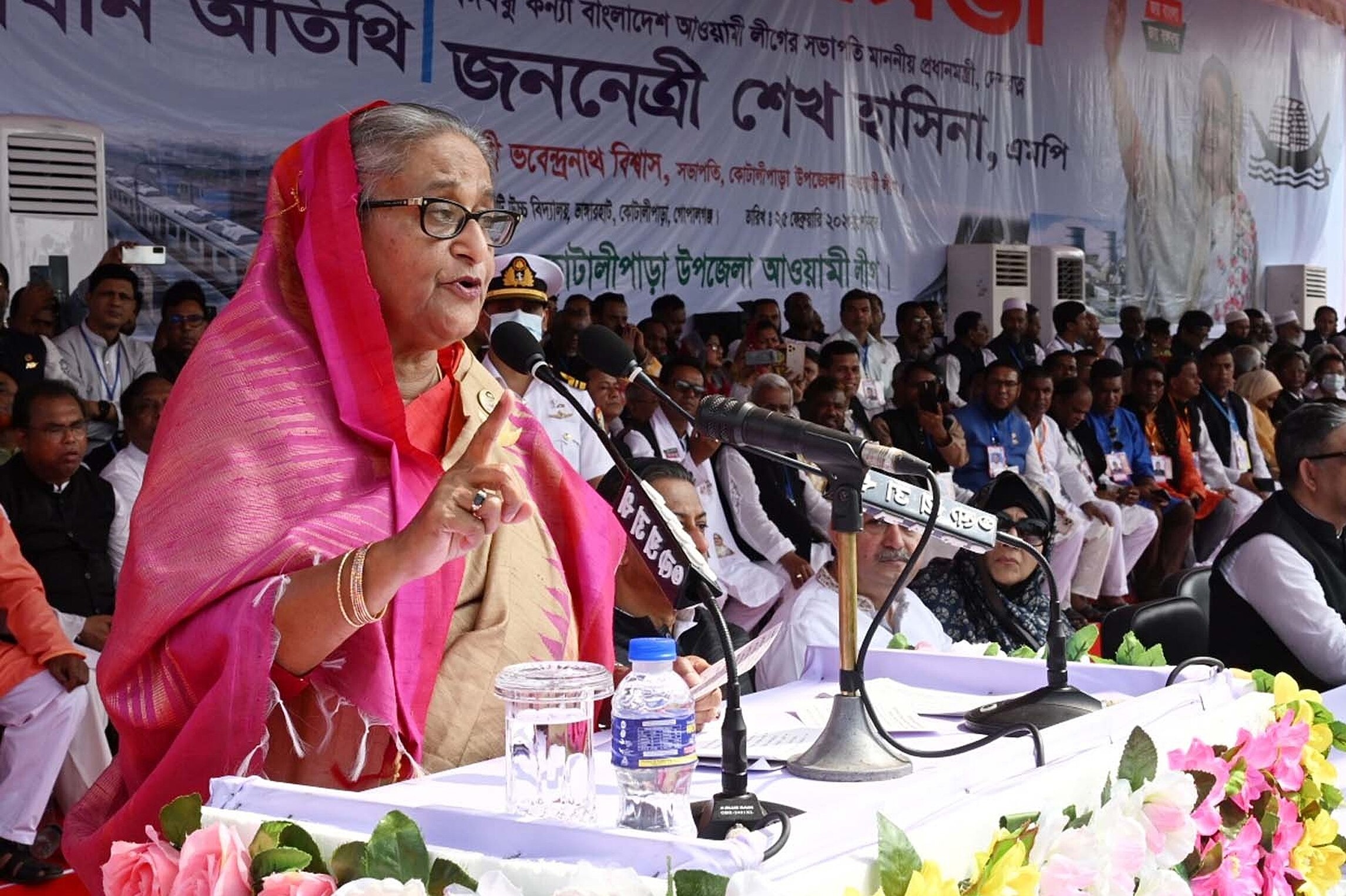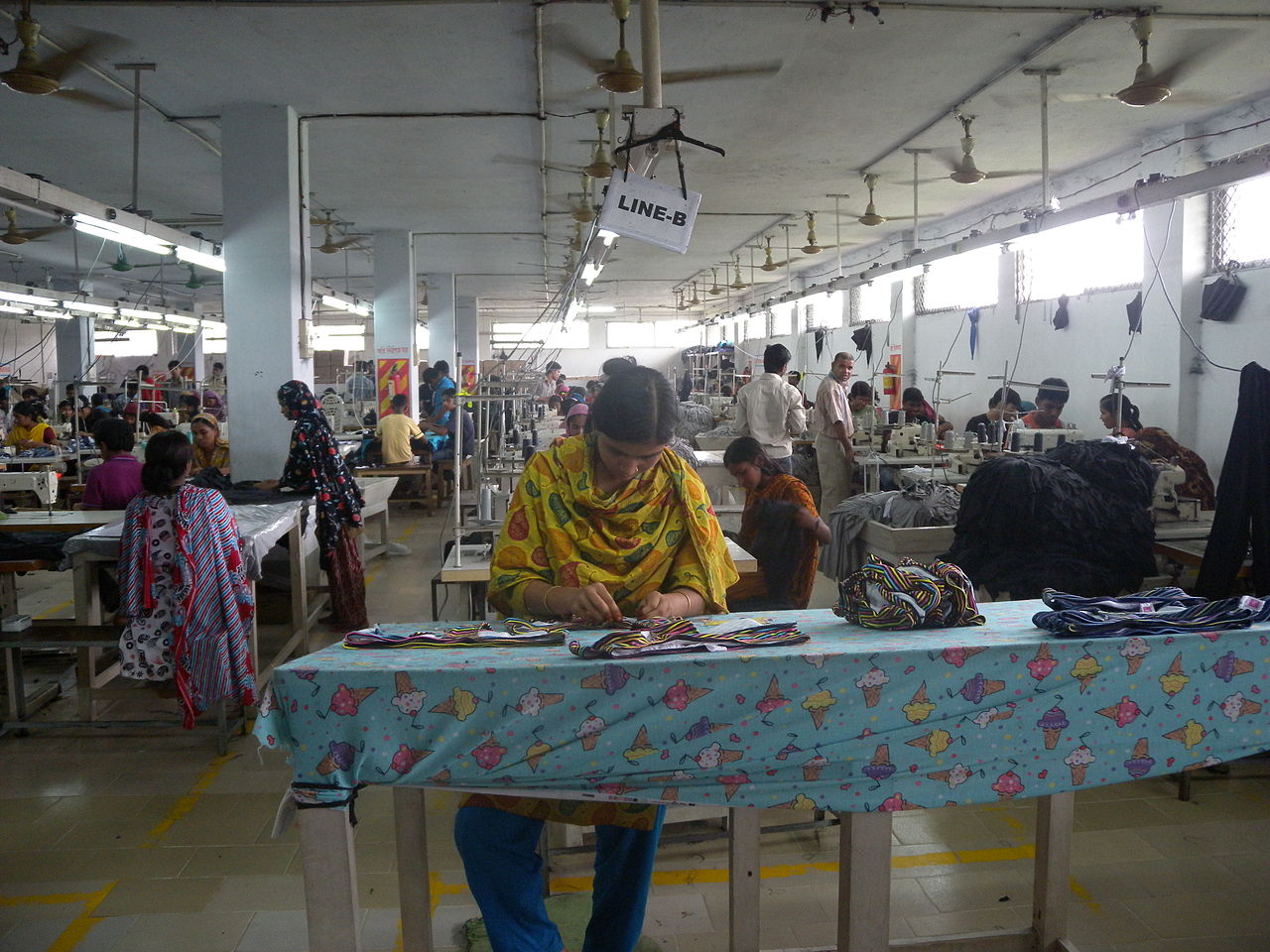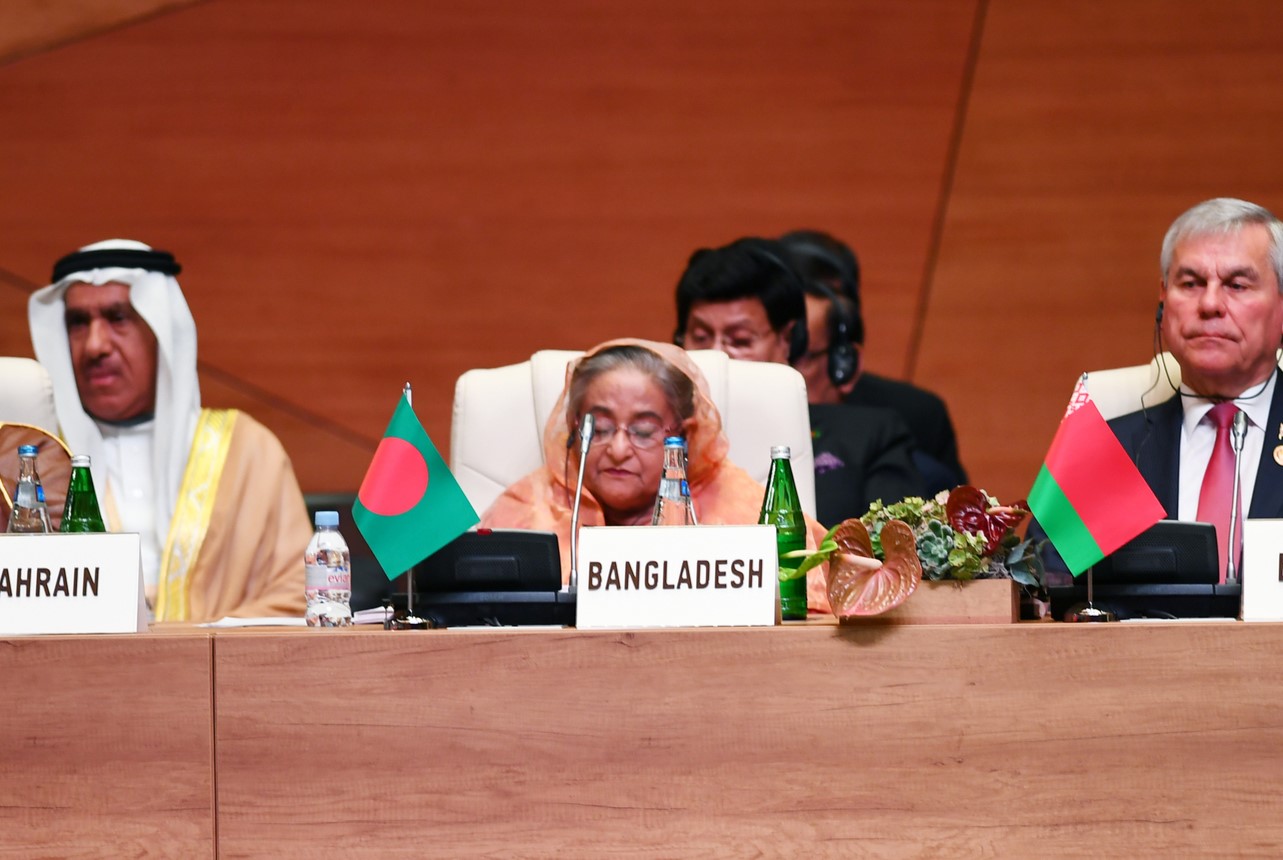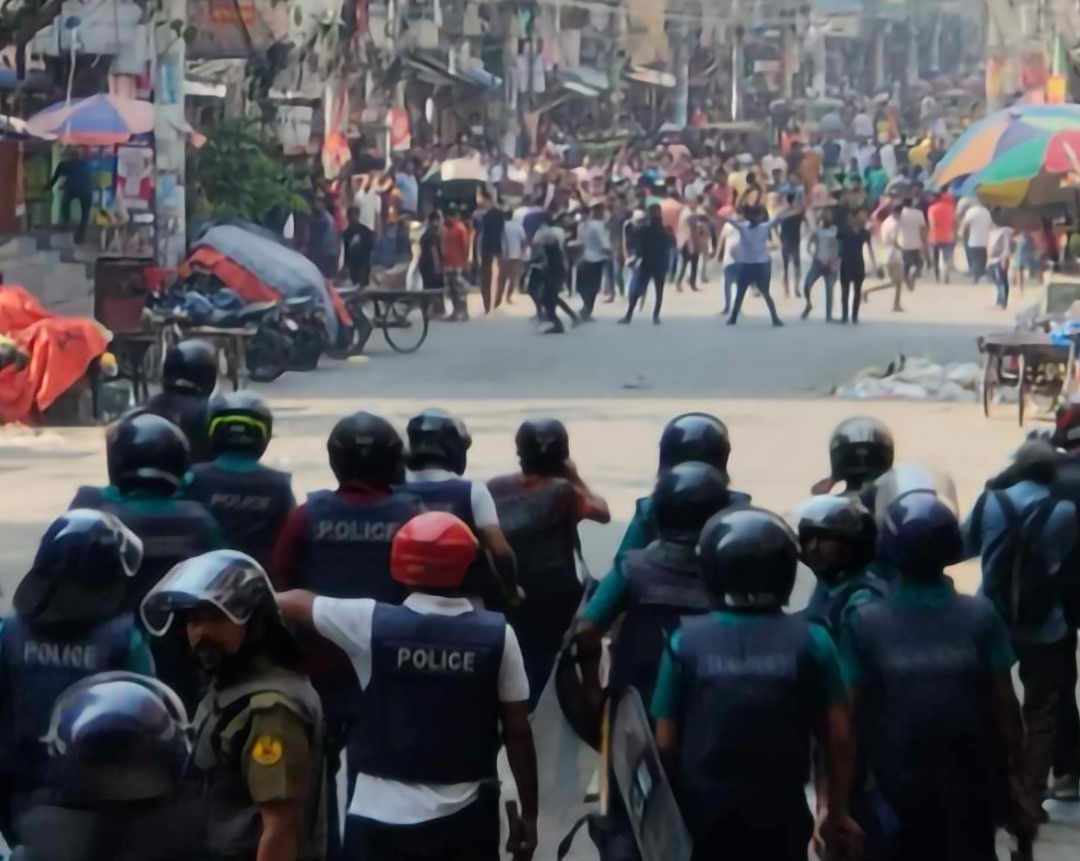Bangladesh, the eighth most populous country in the world, is being rocked by political and social upheaval. Opposition leaders have been arrested. Tens of thousands have clashed in the streets with police, leading to the deaths of two protestors.
Significantly, a huge strike has broken out among garment workers. Over 500 factories have been shut, as workers demand a wage increase from $75 to $209 per month. When the bosses offered only $90, this sparked uproar among the striking workers. After police fired upon the demonstrators, two workers were killed, and dozens more were injured. Instead of quelling the movement, the strikes instead spread like wildfire, starting on the outskirts and spreading across the whole of Dhaka.
The authorities have since offered a 56 percent pay rise, setting minimum monthly wages at $113 to take effect on 1 December. This derisory offer has been rejected by the unions with one worker saying, “the increase is not enough when prices of all items and rent have gone up sharply.”
As protests intensified, yesterday a 23-year-old female garment worker was shot in the head and killed by police, adding further fuel to the flames.
This represents a turning point in the class struggle in Bangladesh, with the heavy battalions of the working class loudly entering the scene. This is against the backdrop of a deep economic and political crisis.
Economy
Since coming to power in 2008-9, Sheikh Hasina’s Awami League (AL) government has overseen a prolonged period of economic growth, stimulated predominantly through the development of the garment industry. Bangladesh has 3,500 garment factories, making up 85 percent of the country’s $55 billion of exports, making the country the world’s second largest garment exporter behind China.
Many garment workers are women, who report horrifying conditions; including being slapped and beaten when failing to reach absurd output targets. Bangladesh pays some of the lowest wages in the world and is in the top 10 nations in terms of restrictive labour laws. This makes it an attractive site for foreign investment, capitalising on cheap labour through the exploitation of desperate countryfolk.
This is the real ‘secret’ behind Bangladesh’s economic development in the past decade, during which the economy expanded by 7 percent a year most years.
That has now collapsed, however. The COVID-19 pandemic and subsequent world economic slump have wrecked the country’s economy. The rising cost of living, with persistent inflation hovering around 9.6 percent and food inflation at 13 percent, has left many destitute and starving. In the words of one striking worker, “we work to survive but we can’t even cover our basic needs.”
The response of the government has been to borrow money while attempting to drive wages down through repression. Foreign debt has doubled since 2016. It is also more expensive to pay back due to raised interest rates across the world economy.
Since 2021, foreign reserves have plummeted from $48 billion to $20 billion – which is only enough to finance three months worth of imports in a country that heavily relies on imported goods. Earlier this year, a $3.3 billion IMF loan was taken out to plug gaping holes in the state budget.
The past decade also saw the Hasina government give eye-watering sums of money to private firms to incentivise development of natural gas power plants. This scheme completely saturated the economy with gas power plants with capacity outstripping demand by 50 percent! Billions in state funds are still flowing into idle plants to this day.
But Bangladesh has very low natural gas reserves of its own, so when the Ukraine war sparked a rise in LNG prices, the economy simply could not afford to buy natural gas – leading to energy shortages and rolling blackouts..
The irrational ‘invisible hand of the market’ has thrown the country into chaos. And Bangladesh has proven particularly vulnerable to the volatility of the world market on account of its complete reliance on single industries.
The Hasina government
 While Hasina’s government has presided over a decade of economic growth, it has also been strongly associated with blatant, widespread corruption / Image: DelwarHossain, Wikimedia Commons
While Hasina’s government has presided over a decade of economic growth, it has also been strongly associated with blatant, widespread corruption / Image: DelwarHossain, Wikimedia Commons
While Hasina’s government has presided over a decade of economic growth, based on exploitation of the country as a source of cheap labour by multinationals, it has also been strongly associated with blatant, widespread corruption.
For example, Muhammad Aziz Khan the founder of Summit Group – owner of Bangladesh’s largest gas power plant – has a brother in Parliament with close connections to Hasina and the Awami League (AL). $9 billion worth of state funds have flowed directly to Summit Group, an example of the clear links between the ruling party and big business.
As Hasina’s government prepares for the next elections in January, she is attempting to woo the electorate with ‘mega projects’. For example, a new 11km elevated highway above Dhaka. Nothing exemplifies modern Bangladesh more than a toll road which nobody can afford towering over the slums of Dhaka. One fruit seller, encapsulating the frustration at government spending on expensive vanity projects, told the Financial Times, “what do I do with these (mega projects) if I’m dying of starvation!”
This is not having the desired effect of distracting from the crisis, so the government is having to rely more heavily upon state repression. The leader of the opposition Bangladesh National Party (BNP), Mirza Fakhrul Islam Alamgir was recently arrested along with many other leading party figures and thousands of rank and file activists.
The Awami League’s election victories in 2014 and 2018 were characterised by low turnout and vote rigging – sparking violent clashes between opposition activists and police. The coming election promises to be no different. The BNP have called on the AL to step down, and for an interim government to be formed in the lead up to the elections to ensure their legitimacy.
On 28 October, the BNP called an anti-government demonstration in Dhaka which was the largest in a decade, drawing tens of thousands of ordinary people who are furious at the ruling party’s corruption amidst a devastating cost of living catastrophe.
Police fired on the demonstration, killing two people inflaming the situation further. Over the last few days, the BNP has successfully called a transport lockdown and have burned public vehicles – grinding the capital to a halt.
The BNP
The BNP however are no friends of the working class. They and the AL form two rival factions of the ruling class of Bangladesh, which emerged from the war of independence in 1971. Both parties have dominated the political scene since then, and are associated with corruption and repression. The BNP also has close ties with US imperialism. The US ambassador, Peter Haas, has worked overtime to secure talks with BNP leaders. “He and the US embassy have had more interactions with BNP leaders than any other political group,” stated Somoy News.
This is without mentioning the BNP’s links to the extreme right-wing Islamic fundamentalist group Jamaat-I-Islami, who have long been associated with the murder of working class militants and trade unionists.
The BNP has no legs to stand on when calling out corruption and repression. The AL’s crushing victory over the ruling BNP in 2008 was possible precisely because the BNP had discredited themselves in a myriad of corruption and money laundering scandals.
Their popularity has plummeted since the victory of the AL. However, due to the lack of any clear political alternative, they have undergone something of a revival in the past period as the only stick with which to hit the ruling party. But the general mood is one of cynicism and anger towards all politicians, and a seeking for some alternative.
Indeed, according to a study by the US Institute of Peace, 80 percent of Bangladeshis feel “there is a large gap between political elites and the people,” whilst one in three want to see the emergence of new political parties.
Unfortunately, instead of providing a lead and a channel for this anger, much of the so-called ‘left’ repeats the idea of ‘lesser-evilism’, supporting AL as a lesser evil to the right-wing BNP supported by the Islamic fundamentalists. This is a false approach. The working class and youth can trust only in their own strength and initiative.
The working class
The eruption of the garment workers onto the scene is very significant, and importantly has no connection to the BNP.
 The eruption of the garment workers onto the scene is very significant / Image: Tareq Salahuddin, Wikimedia Commons
The eruption of the garment workers onto the scene is very significant / Image: Tareq Salahuddin, Wikimedia Commons
Bangladesh’s complete reliance on the garment sector means these workers hold enormous bargaining power. In effect, the country’s 4 million garment workers (out of a population of 169.4 million) account for approximately 16 percent of the country's GDP: having the power to grind the entire economy to a halt.
The ruling class and their stooges in the AL are pleading with the workers to go back to work. The bosses are threatening that if ‘buyer confidence’ is undermined, the garment industry will cease to be profitable, and workers will lose their jobs.
The trade union leaders should therefore demand these factories open their books and prove they cannot pay the workers. If they refuse, they should be expropriated and put under worker’s control!
One government minister has called the workers’ demands “unreasonable” and urged them to go back to work, only after which would they be prepared to introduce a “reasonable wage structure”. It was only thanks to the militancy of the strike, which hit the bosses where it hurts most (in their pockets) that the bosses raised their offer in the first place!
The workers are not falling for the carrot and are not cowering before the stick of state repression. This weekend, 3,000 workers attempted to block strike breakers entering a recently opened factory.
In a last-ditch effort to break the strikes, the bosses have used the draconian anti-labour laws to lock workers out without pay.
The imperialists must also be alarmed at the situation unfolding. The huge companies supplied by Bangladesh’s garment sector include Primark, Zara and H&M. They are clearly concerned for their bottom line and are urging Hasina to implement “responsible purchasing practices” but to “consider inflationary pressures” when working out a pay deal.
The president of the BGIWF Union has responded by saying these retailers “only care about smooth shipments and profit. But they don’t care about the wellbeing of workers at the bottom of the supply chain and the fact that many workers are half starving.”
The concern from the western media shows just how powerful the Bangladesh garment workers are even on an international scale.
However, they cannot do it alone. In order to succeed the strikes must connect with and draw in workers across the whole of Bangladesh: from the ports of Chittagong to the workers in the transport and energy sectors.
The immediate demands for better pay and conditions must then be connected to a political struggle to wrest power from the rotten clique of bankers and capitalists that sit at the top of Bangladeshi society.
Prospects
 The ruling class are split and cannot rule in the same way as before / Image: President of Azerbaijan, Wikimedia Commons
The ruling class are split and cannot rule in the same way as before / Image: President of Azerbaijan, Wikimedia Commons
The ruling class are split and cannot rule in the same way as before. Repression is only emboldening the masses. The working class are extremely powerful and are growing in boldness and militancy.
The economic crisis will only become more acute and draw wider layers of workers and youth into struggle.
If the AL wins the January elections, either through vote rigging or a BNP boycott, it will act as an accelerant to the unfolding social upheaval. Wider layers of the population will be brought out onto the streets and we may see strikes assuming a political character against the regime and for a political change.
In the complete absence of a genuine political expression for the working class, the BNP will seek to cynically use this ferment for their own narrow interests, and use it to try and place themselves at the head of the government.
All the objective factors are setting the stage for a revolutionary explosion. An article in the Daily Star written in April 2022 by economist Dr. Abdullah Shibli asked “Could Bangladesh be the next Sri Lanka?” Things have since gotten far worse and are set to get worse still for the strategists of capital.
But unless a revolutionary party is built in time, the danger exists that the revolutionary energy of the masses will dissipate without fundamentally changing society, and leadership will be assumed by middle class types looking to profit from the people’s anger.
The urgency to build a revolutionary communist party in Bangladesh and the rest of the world has never been more pressing!

